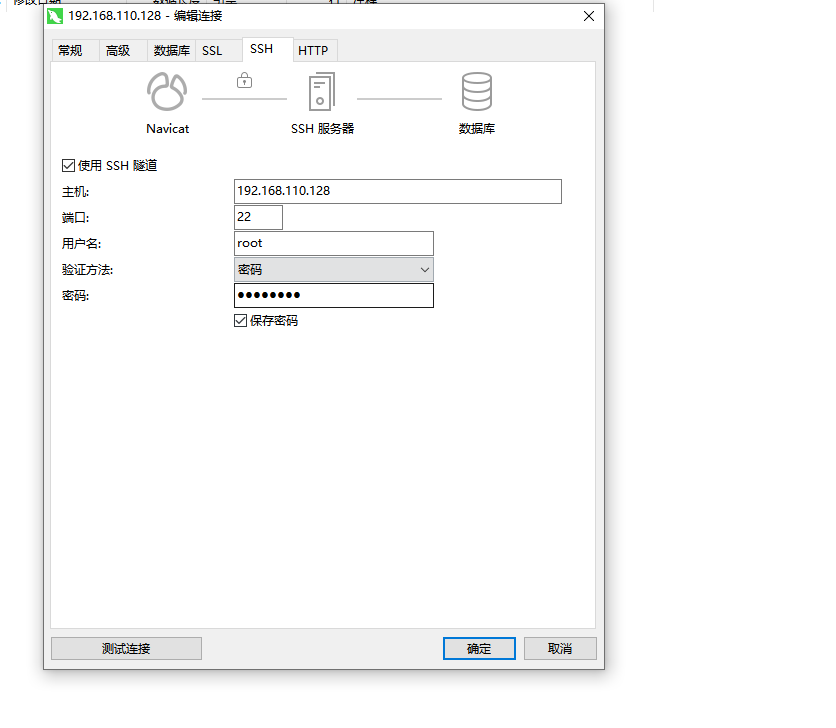62 加密算法
三种加密算法分类:
- 对称加密:密钥只有一个,解密、解密都是这个密码,加解密速度快,典型的对称加密有DES、AES、RC4等
- 非对称加密:密钥成对出现,分别为公钥和私钥,从公钥无法推知私钥,反之,从私钥也无法推知公钥,加密和解密使用不同的密钥,公钥加密需要私钥解密,反之,私钥加密需要公钥解密。非对称加密速度较慢,典型的非对称算法有:RSA,DSA,DSS.
- Hash算法:这是一种不可逆的算法,它常用于验证数据的完整性。
针对拥有密钥的数量来分类,发送方和接收方拥有一样的密钥,用这个密钥进行加密解密的话就是对称加密。如果拥有两个密钥的话,分为私钥和公钥
摘要算法
摘要算法是一类用于生成固定长度的摘要或哈希值的算法,其核心目的是将任意长度的数据通过计算转化为一个简短的唯一标识符(摘要)。摘要算法的主要特性包括:
- 固定长度输出:无论输入数据的长度多长,摘要算法都会输出固定长度的哈希值,例如MD5生成128位的哈希值,SHA-256生成256位的哈希值。
- 高效性:摘要算法的计算速度通常很快,即使面对大规模数据,生成哈希值的过程也十分高效。
- 不可逆性:摘要算法是单向的,无法从哈希值逆向推导出原始数据。这使得摘要算法在密码学中常用于数据的完整性校验和数字签名。
- 抗碰撞性:好的摘要算法应该很难找到两个不同的输入数据产生相同的哈希值,这种特性称为抗碰撞性。常见的摘要算法包括MD5、SHA-1、SHA-256等。
摘要算法简单的来说就是无论输入多长都会将输入加密成指定长度的哈希值。
MD5加密
准确来讲,MD5不是一种加密算法,而是一种摘要算法,MD5能将明文输出为128bits的字符串,这个字符串是无法再被转换成明文的。所以说如果使用了MD5加密之后的字符串是无法通过密文得到其原来的明文的。这种摘要算法一般用于数字签名、密码储存和数据完整性。
public class MD5 {
/**
* 生成MD5
* @param str
* @return
*/
public String encode(String str) {
byte[] result = null;
try {
MessageDigest md = MessageDigest.getInstance("MD5");
md.update(str.getBytes("UTF-8"));
result = md.digest();
} catch (Exception e) {
e.printStackTrace();
return null;
}
return parseByte2HexStr(result);
}
/**
* 将二进制转换成十六进制
*
* @param buf
* @return
*/
private String parseByte2HexStr(byte buf[]) {
StringBuffer sb = new StringBuffer();
for (int i = 0; i < buf.length; i++) {
String hex = Integer.toHexString(buf[i] & 0xFF);
if (hex.length() == 1) {
hex = '0' + hex;
}
sb.append(hex.toUpperCase());
}
return sb.toString();
}
public static void main(String[] args) {
MD5 md5=new MD5();
String content = "测试test";
System.out.println(md5.encode(content));
}
}
SHA1算法
SHA1也是和MD5类似的信息摘要算法,但是它比MD5更加安全。
public class SHA1 {
public String encode(String str) {
try {
MessageDigest md = MessageDigest.getInstance("SHA-1");
md.update(str.getBytes("utf-8"));
byte[] digest = md.digest();
return byteToHexString(digest);
} catch (Exception e) {
e.printStackTrace();
return null;
}
}
public static String byteToHexString(byte[] bytes) {
return String.valueOf(Hex.encodeHex(bytes));
}
public static void main(String[] args) {
SHA1 sha1 = new SHA1();
String content = "测试test";
System.out.println(sha1.encode(content));
}
}
对称加密
AES
AES代表Advanced Encryption Standard,即高级加密标准。AES是很常见的对称加密算法,所谓对称加密,就是通过密钥加密后可以再通过密钥解密。这里需要注意的是密钥十分重要,如果密钥丢失,就有信息泄漏的风险。
public class AES {
/**
* 将传入的明文转换为密文
* @param str
* @param pwd
* @return
*/
public String encode(String str,String pwd) {
byte[] result = null;
try {
KeyGenerator kgen = KeyGenerator.getInstance("AES");
SecureRandom random = SecureRandom.getInstance("SHA1PRNG");
random.setSeed(pwd.getBytes());
kgen.init(128, random);
SecretKey secretKey = kgen.generateKey();
byte[] enCodeFormat = secretKey.getEncoded();
SecretKeySpec key = new SecretKeySpec(enCodeFormat, "AES");
// 创建密码器
Cipher cipher = Cipher.getInstance("AES/ECB/PKCS5Padding");
cipher.init(Cipher.ENCRYPT_MODE, key);
byte[] byteContent = str.getBytes();
result = cipher.doFinal(byteContent);
} catch (Exception e) {
return null;
}
return parseByte2HexStr(result);
}
/**
* 将传入的密文转换为明文
* @param str
* @param pwd
* @return
*/
public String decode(String str,String pwd) {
byte[] result = null;
byte[] content = parseHexStr2Byte(str);
try {
KeyGenerator kgen = KeyGenerator.getInstance("AES");
SecureRandom random = SecureRandom.getInstance("SHA1PRNG");
random.setSeed(pwd.getBytes());
kgen.init(128, random);
SecretKey secretKey = kgen.generateKey();
byte[] enCodeFormat = secretKey.getEncoded();
SecretKeySpec key = new SecretKeySpec(enCodeFormat, "AES");
// 创建密码器
Cipher cipher = Cipher.getInstance("AES/ECB/PKCS5Padding");
cipher.init(Cipher.DECRYPT_MODE, key);
result = cipher.doFinal(content);
} catch (Exception e) {
e.printStackTrace();
return null;
}
return new String(result);
}
/**
* 将二进制转换成十六进制
*
* @param buf
* @return
*/
private String parseByte2HexStr(byte buf[]) {
StringBuffer sb = new StringBuffer();
for (int i = 0; i < buf.length; i++) {
String hex = Integer.toHexString(buf[i] & 0xFF);
if (hex.length() == 1) {
hex = '0' + hex;
}
sb.append(hex.toUpperCase());
}
return sb.toString();
}
/**
* 将十六进制转换为二进制
*
* @param hexStr
* @return
*/
private byte[] parseHexStr2Byte(String hexStr) {
if (hexStr.length() < 1) {
return null;
}
byte[] result = new byte[hexStr.length() / 2];
for (int i = 0; i < hexStr.length() / 2; i++) {
int high = Integer.parseInt(hexStr.substring(i * 2, i * 2 + 1), 16);
int low = Integer.parseInt(hexStr.substring(i * 2 + 1, i * 2 + 2), 16);
result[i] = (byte) (high * 16 + low);
}
return result;
}
public static void main(String[] args) {
AES aes = new AES();
String content = "测试加密";
// AES的密钥长度最好是16位(不是必须)
String pwd = "javayznbjavayznb";
// 加密
System.out.println("加密前:" + content);
String encodeResultStr = aes.encode(content,pwd);
System.out.println("加密后:" + encodeResultStr);
// 解密
String decodeResultStr = aes.decode(encodeResultStr,pwd);
System.out.println("解密后:" + decodeResultStr);
}
}
DES
DES也是一种对称加密算法,但是在安全性、效率和灵活性上比AES略差,但是也能保证安全,DES也需要通过密钥进行加密,通过密钥进行解密,因此密钥很重要:
public class DES {
/**
* 将传入的明文转换为密文
* @param str
* @param pwd
* @return
*/
public String encode(String str,String pwd) {
byte[] result = null;
try {
DESKeySpec keySpec = new DESKeySpec(pwd.getBytes());
SecretKeyFactory keyFactory = SecretKeyFactory.getInstance("DES");
SecretKey key = keyFactory.generateSecret(keySpec);
Cipher cipher = Cipher.getInstance("DES/ECB/PKCS5Padding");
cipher.init(Cipher.ENCRYPT_MODE, key);
byte[] byteContent = str.getBytes();
result = cipher.doFinal(byteContent);
} catch (Exception e) {
e.printStackTrace();
return null;
}
return parseByte2HexStr(result);
}
/**
* 将传入的密文转换为明文
* @param str
* @param pwd
* @return
*/
public String decode(String str,String pwd) {
byte[] result = null;
byte[] content = parseHexStr2Byte(str);
try {
DESKeySpec keySpec = new DESKeySpec(pwd.getBytes());
SecretKeyFactory keyFactory = SecretKeyFactory.getInstance("DES");
SecretKey key = keyFactory.generateSecret(keySpec);
Cipher cipher = Cipher.getInstance("DES/ECB/PKCS5Padding");
cipher.init(Cipher.DECRYPT_MODE, key);
result = cipher.doFinal(content);
} catch (Exception e) {
e.printStackTrace();
return null;
}
return new String(result);
}
/**
* 将二进制转换成十六进制
*
* @param buf
* @return
*/
private String parseByte2HexStr(byte buf[]) {
StringBuffer sb = new StringBuffer();
for (int i = 0; i < buf.length; i++) {
String hex = Integer.toHexString(buf[i] & 0xFF);
if (hex.length() == 1) {
hex = '0' + hex;
}
sb.append(hex.toUpperCase());
}
return sb.toString();
}
/**
* 将十六进制转换为二进制
*
* @param hexStr
* @return
*/
private byte[] parseHexStr2Byte(String hexStr) {
if (hexStr.length() < 1) {
return null;
}
byte[] result = new byte[hexStr.length() / 2];
for (int i = 0; i < hexStr.length() / 2; i++) {
int high = Integer.parseInt(hexStr.substring(i * 2, i * 2 + 1), 16);
int low = Integer.parseInt(hexStr.substring(i * 2 + 1, i * 2 + 2), 16);
result[i] = (byte) (high * 16 + low);
}
return result;
}
public static void main(String[] args) {
DES des = new DES();
String content = "测试test";
// DES的密钥长度必须是8位(小于8位则会报错,8位之后对加密结果不会产生影响)
String pwd = "javayznb";
// 加密
System.out.println("加密前:" + content);
String encodeResultStr = des.encode(content,pwd);
System.out.println("加密后:" + encodeResultStr);
//解密
String decodeResultStr = des.decode(encodeResultStr,pwd);
System.out.println("解密后:" + decodeResultStr);
}
}
非对称加密
RSA
RSA是目前最具影响力的公钥加密算法,并且可以用于加密和验签。支付宝支付对接时用的加密方式就是RSA。在RSA中,存在一对密钥,分别称为公钥和私钥,通过私钥由个人保存,公钥可能多人持有。
RSA的主要应用场景就是加密和验签,加密就不用说了,验签是指通过私钥对消息进行签名,使得消息无法篡改和伪造。
加密方式:B传加密数据给A
1、A生成公钥和私钥,私钥自己保留,公钥任何人可以获取。
2、B拿到公钥,将数据通过公钥加密
3、A收到密文,通过私钥解密。
验签方式:A传消息给B
1、A生成公钥和私钥,私钥自己保留,公钥任何人可以获取。
2、A使用私钥对消息加签,并将加签后的消息传给B。
3、B通过公钥验签,如果返回是true则说明消息是A发过来的且未被篡改。
public class TestRSA {
/**
* RSA最大加密明文大小
*/
private static final int MAX_ENCRYPT_BLOCK = 117;
/**
* RSA最大解密密文大小
*/
private static final int MAX_DECRYPT_BLOCK = 128;
/**
* 获取密钥对
*
* @return 密钥对
*/
public static KeyPair getKeyPair() throws Exception {
KeyPairGenerator generator = KeyPairGenerator.getInstance("RSA");
generator.initialize(1024);
return generator.generateKeyPair();
}
/**
* 获取私钥
*
* @param privateKey 私钥字符串
* @return
*/
public static PrivateKey getPrivateKey(String privateKey) throws Exception {
KeyFactory keyFactory = KeyFactory.getInstance("RSA");
byte[] decodedKey = Base64.decodeBase64(privateKey.getBytes());
PKCS8EncodedKeySpec keySpec = new PKCS8EncodedKeySpec(decodedKey);
return keyFactory.generatePrivate(keySpec);
}
/**
* 获取公钥
*
* @param publicKey 公钥字符串
* @return
*/
public static PublicKey getPublicKey(String publicKey) throws Exception {
KeyFactory keyFactory = KeyFactory.getInstance("RSA");
byte[] decodedKey = Base64.decodeBase64(publicKey.getBytes());
X509EncodedKeySpec keySpec = new X509EncodedKeySpec(decodedKey);
return keyFactory.generatePublic(keySpec);
}
/**
* RSA加密
*
* @param data 待加密数据
* @param publicKey 公钥
* @return
*/
public static String encrypt(String data, PublicKey publicKey) throws Exception {
Cipher cipher = Cipher.getInstance("RSA");
cipher.init(Cipher.ENCRYPT_MODE, publicKey);
int inputLen = data.getBytes().length;
ByteArrayOutputStream out = new ByteArrayOutputStream();
int offset = 0;
byte[] cache;
int i = 0;
// 对数据分段加密
while (inputLen - offset > 0) {
if (inputLen - offset > MAX_ENCRYPT_BLOCK) {
cache = cipher.doFinal(data.getBytes(), offset, MAX_ENCRYPT_BLOCK);
} else {
cache = cipher.doFinal(data.getBytes(), offset, inputLen - offset);
}
out.write(cache, 0, cache.length);
i++;
offset = i * MAX_ENCRYPT_BLOCK;
}
byte[] encryptedData = out.toByteArray();
out.close();
// 获取加密内容使用base64进行编码,并以UTF-8为标准转化成字符串
// 加密后的字符串
return new String(Base64.encodeBase64String(encryptedData));
}
/**
* RSA解密
*
* @param data 待解密数据
* @param privateKey 私钥
* @return
*/
public static String decrypt(String data, PrivateKey privateKey) throws Exception {
Cipher cipher = Cipher.getInstance("RSA");
cipher.init(Cipher.DECRYPT_MODE, privateKey);
byte[] dataBytes = Base64.decodeBase64(data);
int inputLen = dataBytes.length;
ByteArrayOutputStream out = new ByteArrayOutputStream();
int offset = 0;
byte[] cache;
int i = 0;
// 对数据分段解密
while (inputLen - offset > 0) {
if (inputLen - offset > MAX_DECRYPT_BLOCK) {
cache = cipher.doFinal(dataBytes, offset, MAX_DECRYPT_BLOCK);
} else {
cache = cipher.doFinal(dataBytes, offset, inputLen - offset);
}
out.write(cache, 0, cache.length);
i++;
offset = i * MAX_DECRYPT_BLOCK;
}
byte[] decryptedData = out.toByteArray();
out.close();
// 解密后的内容
return new String(decryptedData, "UTF-8");
}
/**
* 签名
*
* @param data 待签名数据
* @param privateKey 私钥
* @return 签名
*/
public static String sign(String data, PrivateKey privateKey) throws Exception {
byte[] keyBytes = privateKey.getEncoded();
PKCS8EncodedKeySpec keySpec = new PKCS8EncodedKeySpec(keyBytes);
KeyFactory keyFactory = KeyFactory.getInstance("RSA");
PrivateKey key = keyFactory.generatePrivate(keySpec);
Signature signature = Signature.getInstance("MD5withRSA");
signature.initSign(key);
signature.update(data.getBytes());
return new String(Base64.encodeBase64(signature.sign()));
}
/**
* 验签
*
* @param srcData 原始字符串
* @param publicKey 公钥
* @param sign 签名
* @return 是否验签通过
*/
public static boolean verify(String srcData, PublicKey publicKey, String sign) throws Exception {
byte[] keyBytes = publicKey.getEncoded();
X509EncodedKeySpec keySpec = new X509EncodedKeySpec(keyBytes);
KeyFactory keyFactory = KeyFactory.getInstance("RSA");
PublicKey key = keyFactory.generatePublic(keySpec);
Signature signature = Signature.getInstance("MD5withRSA");
signature.initVerify(key);
signature.update(srcData.getBytes());
return signature.verify(Base64.decodeBase64(sign.getBytes()));
}
public static void main(String[] args) {
try {
// 生成密钥对
KeyPair keyPair = getKeyPair();
String privateKey = new String(Base64.encodeBase64(keyPair.getPrivate().getEncoded()));
String publicKey = new String(Base64.encodeBase64(keyPair.getPublic().getEncoded()));
System.out.println("私钥:" + privateKey);
System.out.println("公钥:" + publicKey);
// RSA加密
String data = "待加密的文字内容";
String encryptData = encrypt(data, getPublicKey(publicKey));
System.out.println("加密后内容:" + encryptData);
// RSA解密
String decryptData = decrypt(encryptData, getPrivateKey(privateKey));
System.out.println("解密后内容:" + decryptData);
// RSA签名
String sign = sign(data, getPrivateKey(privateKey));
System.out.println("加签后:"+sign);
// RSA验签
boolean result = verify(data, getPublicKey(publicKey), sign);
System.out.print("验签结果:" + result);
} catch (Exception e) {
e.printStackTrace();
System.out.print("加解密异常");
}
}
}
签名

签名的作用就是验证传输的消息是否被人修改过了。
Base64
Base64是一种二进制到文本的编码方式。如果要更具体一点的话,可以认为它是一种将 byte数组编码为字符串的方法,而且编码出的字符串只包含ASCII基础字符。
例如字符串ShuSheng007对应的Base64为U2h1U2hlbmcwMDc=。其中那个=比较特殊,是填充符,一会再说。
值得注意的是Base64不是加密算法,其仅仅是一种编码方式,算法也是公开的,所以不能依赖它进行加密。
为什么叫Base64?


Base64就是为了解决各系统以及传输协议中二进制不兼容的问题而生的



















